For three nights, Oct. 25-27, the Rocky Horror shadow cast, 20 promiscuously dressed student performers, heated up the Screen with an uncensored salute to the ’70s British musical The Rocky Horror Picture Show. With fishnets, speedos, wigs and an “Oh my goodness, what am I looking at?”expression from the Rocky Horror audience, the shows acted as the perfect Halloween prelude, conjuring the horrifyingly sexy side in all of us. “You gotta have some of the biggest balls to do this show,” says Rocky Horror student director Peter Crowder, who with film major Jack Brinkley initiated the shows on campus last year. “I’m referring to this metaphorically, but if you wanted to go physically too,” Crowder continues, “you gotta be strong to put on this show because you’re gonna get flack from people who aren’t used to it, who don’t like it, but at the same time you’ll be dealing with people who love it so much and so intensely that if you don’t do it right, you’re going to get smashed and pulverized.” Crowder, who watched the shows all three nights, was able to participate as an audience member, shouting out jokes that accompanied lines in the film. As well as being liaison for the Screen, Crowder’s right-hand-man Brinkley played the part of the creepy Lurch-like character Riff Raff, “a vengeful handyman,” Brinkley says, who gets particularly crazy during the Time Warp, a dance involving pelvic thrusts. “I also liked coming out in drag with oblivion in my hand.” What’s oblivion? Brinkley laughs. “It’s a 14.5-inch dildo. During one rehearsal I said, ‘say goodbye to all of this and say hello to oblivion.’” The cast called the dildo Oblivion ever since. To get a perspective of just how crazy the show is, it may help knowing that the...
Halloween Happenings
posted by Maria Costasnovo
SFUAD and Santa Fe offer plenty of choices for Halloween. Here are a few picks. For extensive Halloween calendar listings, check out this round-up from SantaFe.com and these choices from The Santa Fe Reporter. October 31 “Break the Piñata” Celebrate Halloween with the Photography Department by breaking a big scary piñata on the Marion Courtyard. Feel free to come in costume. 5 pm Trick or Treat If you want to feel like a kid again, trick or treating is always a good option. SFUAD offers a campus-wide Trick or Treat at various departments from noon to 1 pm. If you prefer to do it off campus, consider Canyon Road, where, from 4 to 6 pm, some galleries like Canyon Road Contemporary Art or Gallery 822 will have their doors open. Needless to say, being in a costume is essential. Movie Night! What is a Halloween night without a touch of horror movies? For those who don’t want to leave the campus, The Screen will play the original Nightmare on Elm Street at 10.30 pm. The Lensic Performing Arts Center will screen the classic The Man Who Fell to Earth at 7 pm. And The Jean Cocteau Cinema offers the Vincent Price thriller House of Wax at 6:30 pm as a special benefit for The Santa Fe Film Festival, with a costume contest and Mistress of Ceremonies Victoria Price. The Jean Cocteau also will screen The Rocky Horror Picture Show for the late show at 11 pm, and throughout the weekend (costumes also welcome for Rocky Horror!) November 1-2 Once Halloween ends, the Mexican tradition marking “Dia de Muertos” (Day of the Dead) begins. Gerard’s House will offer a celebration and memorializing event from 4-6:30 pm featuring performances by Wise Fool and The Santa Fe Symphony, with...
Film Fright
posted by Brandon Ghigliotty
Initially I wanted to do a narrower list of movies, but I’m too much of a fan of horror to winnow the list down to specific decades. I chose the following horror movies based on absolutely no criteria other than personal taste. Some you may be familiar with, but I hope I have a few surprises. Here are five films for All Hallow’s Eve. In order by year of release: Tucker & Dale vs. Evil (2010) This movie is the finest horror movie to come out in years. It’s a bit of a play on horror tropes through the eyes of what would traditionally be considered the “antagonist.” It opens in familiar slasher tradition: A group of college-aged friends get together for a trip to the lake. While the film continuously flirts with the idea of slasher tropes, it revels in the inherent humor and stupidity of the genre. It’s a smart film and, more surprisingly, you might find yourself laughing harder at Tucker & Dale than a dedicated comedy. Trick ‘r Treat (2008) One of my favorite styles of horror film is the horror anthology. Trick ‘r Treat is a series of short horror stories pieced together by a common town and mythos. It utilizes the familiar tropes found in coming-of-age stories to ease its way in and then loses the inhibitions. The stories are interesting, fresh and tightly-packed into its 82 minute runtime. Behind the Mask: The Rise of Leslie Vernon (2007) This one is another slasher that shrugs off its genre. Told in a documentary style, it follows the footsteps of a pseudo Jason Voorhees and how much work really goes into hunting down oversexed teenagers. It educates the audience on the symbolism in horror films, while simultaneously celebrating and embracing...
Jackalope Halloween Memories
posted by Nick Martinez
It’s every 13-year-old’s favorite holiday this week. To celebrate, the Jackalope staff looked back on some of their fondest Halloween-related memories. Charlotte Martinez I had a friend named Matt in my dance company who came up with the best costumes for Halloween. One year he dressed up as a kissing booth: “$1 Per Kiss,” was written on a frame he had constructed from his waist to the top of his head. Another year he draped a blue cloth and a sign that read “Caution, Still Wet” over his shoulders and called himself a puddle. The best costume, though, was when he got my brother and his friend to dress up as the Blue Man Group. The Blue Man Group, if you don’t know, are musicians/mimes who perform these strange comedy acts. They dress in black, perform in trios and paint their heads and faces shiny bright blue. That Halloween, I arrived at school to find a crowd throwing marshmallows toward three guys with blue heads and shiny blue faces. Matt, my brother and his friend stood like aliens, mute and wide eyed. They were catching marshmallows in their mouths. It was the best Halloween by far. Maria Costas Novo My best memory from Halloween is actually from last year. In my country, Halloween is not a big celebration; actually, it is just something for kids, and an excuse for the adults to go out to a disco. Last year, was my first Halloween in the US, and it was amazing. There were three different parties in three different days, and I had a different costume for every party. I also remember doing the Trick or Treat all over the campus getting candies as if I was a little kid. It was the first time in my life that I did something like that, and I really enjoyed it! Nick Beckman It was my junior year of high school and I went to a Halloween party my friend was hosting. In my usual immature and slightly off-putting nature, I decided to dress as Your Average Pervert. My thick prescription lenses and fake mustache seemed to be making a few of the party-goers uncomfortable, so I figured copious amounts of alcohol would help make that more enjoyable. The next thing I really remember was lying on the basement couch and two girls I went to high school with were staring at me in absolute disgust. Thinking my costume had offended them in some way, I promptly turned on my side and fell back asleep, grimacing to my drunken self. However, as it turns out, the couch I was lying on just so happened to be where all of the girls were leaving their purses to be safe. In my drunken stupor, I had apparently mistaken one of the open purses as a puke bucket and spewed my whiskey leavings inside of it. One of the girls hosted that year’s post-prom party to which I was, for some reason or another, not invited. Bran Ghigliotty Worst: I think I dressed as a pirate for almost my entire childhood. It wasn’t even a good costume—it was out of a goddamn bag! A brand new bag-o-pirate every year. I don’t want to talk about it. Best: I don’t think this exists right now. I’m heading to see Coco Rosie on Halloween this year, so it’ll easily take the top spot. I tend to just shut off all the lights and hide from everyone on major holidays.(Shut up, this is why I didn’t want to share in the first place. My life is a fart.) Shayla Blatchford I wouldn’t say I was kidnapped by gypsies, but I was stuck in the backseat of an Oldsmobile as my new acquaintances tried to navigate their way from Los Angeles to Las Vegas with a quick stop in Tucson. I had met my new friends, Dimon and Katya, at a Gogol Bordello concert and offered...
Walking the Old Main
posted by Brandon Ghigliotty
The riot at the Penitentiary of New Mexico on Feb. 2, 1980 upended the world of corrections. Demands for better food, conditions and programming were forgotten as fury erupted from the residents. The reforms that came out of the event changed prison protocols forever. Now, the administration is embarking on a five-year plan to re-purpose the “Old Main,” which they discuss regularly with visitors on the prison tour. Certainly, the events of the riot—captured vividly in numerous newspaper articles, state reports and books, continue to draw crowds. The guided “Old Main” tour slots have more than doubled due to demand and all ticket proceeds return to increase the quality of the tour and provide future programming for inmates. “Respecting our past to create a better future” is the motto the corrections officer acting as guide offers, before relaying the details of the riot. In the early morning hours of Saturday, Feb. 2, 1980, inmates drinking a crude hooch overpowered the officer that discovered them. Soon, other officers within the dormitory were taken hostage and a set of captured keys liberated other inmates to ensure the riot would continue its course. These newly-freed inmates joined in beating Officer Juan Bustos, stripped and noosed with a belt, during the 12-minute march toward master control. Nearly 100 inmates crowded in front of the newly installed bulletproof plexiglass window of master control. It shattered in three strikes from a fire extinguisher. The armory beneath master control was left undiscovered, limiting the extent of the carnage. Once the master control room was breached, approximately 2:02 a.m., greater access to the prison was attained. Due to construction in cell block five, high risk inmates were mingled with the low risk population. The construction area housed numerous tools left by...
Student Spotlight
posted by Shayla Blatchford
Studio Art major Jessica Gulliford is currently working on her BFA thesis show, a “grand performance” that will focus on inviting her audience into her artwork. The show will consist of installations and performances incorporating “stanchions, ticket booth, photo ops, fog machines, red and pink lights… a bunch of rock’n roll’n.” In the meantime, Gulliford will be offering free portraits to anyone who wishes to visit her during her posted hours. Her next portrait session will be from noon to 2 pm, Nov. 7 in the Fogelson Library. Participants can pick up their portraits at her show, where they will be separately...
Short and Sweet
posted by Charlotte Martinez
From this year’s Santa Fe Independent Film Festival’s Shorts Program, nine films were selected and screened under the category of New Mexico Shorts. This category required that a portion, if not all, footage be shot in the state. In supporting the origins of the festival, Executive Director Jacques Paisner said that when organizers started their screenings five years ago, they were in fact New Mexico filmmakers, and believed other filmmakers from the state “deserve[d] to play for a full house.” In his introduction to the New Mexico Shorts Program on Oct. 16 at Santa Fe’s Center for Contemporary Arts, Paisner invited the directors to present themselves to their audience, who ranged from students to seniors. “These young talented people are the future here in Santa Fe,” Paisner said, motioning to the young filmmakers.“It all starts with their vision. At the beginning, we’d often show almost any New Mexico film because we wanted to be supportive, but this year the competition became tougher than we’ve ever seen it. Each film you’ll see is a testament to that.” Indeed, after the screening was over, I felt—as a film student, a New Mexico resident, and annual SFIFF attendee—that every film demonstrated an inspiring amount of hard work, along with some quirky and enchanting stories. 88 Miles to Moscow, directed by Karen Clienke SFIFF Description: Niki may have missed the train, but don’t miss the heart of her story: a mother-daughter relationship in all its beautiful complexity. For any woman who remembers those uncomfortable talks with an obnoxiously protective mother, Karen Glienke’s 88 Miles to Moscow is relatable and all the more comedic. The film utilizes an interesting technique of cross-cutting between two main scenarios: the young Niki hitching a ride with a strange Russian boy (after missing...
Harvest Season
posted by Nicholas Beckman
“We didn’t want to curate something that seemed like an exhibition,” Luke Dorman explained in defense of his process curating Harvest, the studio art department’s 2nd annual juried art show. Dorman, along with Kelsy Waggaman, both graduates of the College of Santa Fe, were selected to judge and curate Harvest. On Thursday, Oct. 17, the two sat down for an open talk with anyone interested in learning more about their approach to the show. “The exhibition of the rejects,” or Salon de Refuses, is the first cluster of artwork seen when stepping into Fine Arts Gallery in the Southwest Annex. The salon, which was located in the rear of the exhibition during last year’s show, presents all of the works that were submitted to Harvest, but not accepted. The walls are filled with vibrant pieces of each artist’s individual talent, differing in both mediums and subject matter, but aesthetically stimulating when packed so closely together. They fool you into thinking that this is the show you came to see and, judging by the placement and variety in artwork, it is not that much of a stretch. You begin to realize then, after moving a little further into the room, that the selections that have been individually chosen and praised by the jurors are yet to come. The focus shifts from everything at once to one at a time. The 12 pieces selected were given room to breathe between one another with not a single exhibit resembling the next, yet they were all somehow related. You’ve already been shown the works that didn’t work together with all of the variables that go into a juried show, so you can gather that these pieces are meaningful and are all speaking to you thematically. In response to a student’s question asking if a specific theme was apparent to her and Dorman, Waggaman emphasized the importance of the viewer’s response rather than the jurors’ intent. “Do you see a theme?” she posed. At the Q&A with the jurors, students and faculty members, the majority of questions of which were centered around the purpose of the show, its layout in the space and the jurors’ ideas on juried shows in general. Dorman and Waggaman both agreed that, as former art students, it was difficult for them to say “no” to certain pieces that were truly remarkable by themselves, but didn’t work well next to other pieces. Waggaman described acceptance into the Salon as “a different kind of pride.” She also said that whenever her work wasn’t accepted to shows, she learned the most from those failures and it showed her how to improve her work for the next time. From embroidered shoes/socks on paper plates to a mimetic painting of two feuding foxes, all of the pieces in Harvest and the Salon played together to create a sense of place and acceptance. Both jurors worked independently at first in order to decide which ones they liked personally, then came together and collaborated with each other’s favorites. This bonding of different minds formed a cohesive collection of artwork that somehow worked together—despite lacking a specific...
Q/A W Sam Zickefoose
posted by Nick Martinez
In the third of a series of Q&A sessions with SFUAD students, Jackalope Magazine speaks with Contemporary Music Program Sophomore Sam Zickefoose, who illuminates the joy of banjo, Laser Cats and Gypsy Jazz. Jackalope Magazine: What instruments do you play? Sam Zickefoose: My main instrument is banjo, but I play some guitar and mandolin, and a little bit of bass. JM: What got you into banjo? SZ: My uncle played banjo and my family kind of had a blue grass band a while ago, so I grew up with it. JM: What about bluegrass still draws you? SZ: Well, there’s a lot of energy and it’s really a reactive type of music, kind of like jazz. It’s always changing, it’s not set; you can be playing the same songs a hundred times and it will be different every time. JM: What brought you to SFUAD? SZ: To be honest, I was looking for schools that had banjo programs or teachers. There was one here, one in Texas and Berkeley and that was about it. And I ended up here. (laughs) JM: Is there a teacher who plays banjo that has mentored you in any way? SZ: Yeah, Tom Adler plays banjo. He plays clawhammer and is also a guitarist and singer. But I’ve worked with a lot of the teachers and they’ve been really open to relating their concepts to banjo, like Ross [Hamlin], Polly [Ferber] and Scott [Jarrett]. JM: Have you been learning things in general that you could apply to the banjo? SZ: All of our theory classes are really applicable to a lot of different styles of music and writing music in general. In Balkan Ensemble, we learn the theory of the music…and learn new techniques. Even if we don’t use them for Balkan music, we can transfer them...
Rocky Horror Ready to Thrill
posted by Amanda Tyler
The Rocky Horror Picture Show has been a cult classic since the 1970s. Often shown in time for Halloween, the British musical comedy is most frequently played in the theater while a shadow cast pantomimes in front of the screen. SFUAD has a much shorter history with the show, with only one year of this production under its belt. Peter Crowder, a sophomore in the film department, was at the head of the show last year and decided to take the reigns again for this fall. “I wanted to make it happen, so I asked the school and they said yes,” stated the outspoken Australia native. With support from the manager of The Screen, and permission from the nightly film clubs, Crowder has nearly single-handedly pulled together this Halloween weekend event. Last year’s cast included a total of 13 students and resulted in one midnight showing. This year, Crowder began with a more serious intention. He held auditions several weeks ahead of time, requiring students to dance, as well as giving them an option to sing during their time. A third of the final cast are returners, though few are revisiting their old parts. For this weekend’s show, expect a group of 19, scantily clad in various corsets and fishnet tights. These students, from varying departments and with all levels of experience, have managed to come together and embrace their inner actor. After weeks of rehearsals, and memorization of the entire movie by this diverse group of students, the three performances will be surely be memorable. The Rocky Horror Picture Show will be presented at The Screen 11 pm Oct. 25, midnight on Oct. 26, and again at 10 pm Oct....
A New Set of Eyes
posted by Arianna Sullivan
Imagine watching video footage of Olympic athletes training, dance rehearsals, skateboarding tricks—all from a first-person point of view. Google Glass teases the possibility of seeing the world through somebody else’s eyes. Last February, Google opened up a competition for the distribution of its new ‘glasses’ called Google Glass Explorer. In order to enter, contestants—who had to be US citizens over 18 and capable of throwing down $1,500 for a Google Glass—entered by tweeting at Google ‘#ifihadglass’ followed by a 50-word or less proposal. Google chose 8,000 winning tweets and began distributing Google Glass prototypes this spring and summer to the new “Glass Explorers.” As Google Glass became a tangible reality, the question of how the new technology would affect journalism became unavoidable. Was this going to be the next new technology to shake the journalism world? Tim Pool, a multimedia journalist who became well known for his live streamed footage of the 2011 Occupy Wall Street protests in New York City, received his Google Glass just days before heading to Turkey to cover the protests there last summer. What was most exciting to Pool about using Glass to film instead of other devices was obvious: Glass is hands free. Glass relies on Bluetooth or an Android to connect to the Internet, so Pool had to find ways to keep his streaming live (he often carries multiple SIMs so he can switch operators when necessary), but that did not detract from his excitement that he could film hands-free. In a Guardian article from July, Pool explains that, “when there’s a wall of police firing plastic bullets at you, and you’re running through a wall of tear-gas, having your hands free to cover your face, while saying ‘OK Glass, record a video’, makes that recording process...
Basquing in Art
posted by Christopher Stahelin
SFUAD Film major Sara Esparsa talks about the differences between Victoria, Spain and Santa Fe, New Mexico, along with some of her favorite aspects of Santa Fe. In the end she says, “Santa Fe is a great opportunity to be yourself and to create...
Coming Attractions
posted by Charlotte Martinez
The Screen Presents: Oct. 25-31 Una Noche, Would You Choose Family or Freedom? Winner of Tribeca Film Festival’s 2012 Best Director Award, Lucy Mulloy’s Cuban drama tells a daring tale of a young Havana criminal trying to escape to Miami. Beth Accomando of PBS.org says, “Molly captures the Cuban spirit of energy, resiliency, resourcefulness, and passion. She does an impressive job of blending an intimate story of friends with a meticulously observed portrait of Havana.” Muscle Shoals, Most Talked About Documentary Is Still Playing! The true story of the small town with a big sound credits Tennessee’s spiritual “Singing River” as the birthplace of America’s most celebrated music. From the FAME Studios of Rick Hall, blacks and whites worked together in the heat of Alabama’s racial hostility to create what is called the “Muscle Shoals sound.” To attest to Shoals reputation are artists Gregg Allman, Bono, Clarence Carter, Mick Jagger, Etta James, Alicia Keys, Keith Richards, and Percy Sledge. In a documentary “propelled by gorgeous music and rich anecdotes,” David Gritten of The Telegraph calls the story “joyous, uplifting and as funky as the music at its heart.” Turandot (Royal Opera), Performance at the Screen Straight from London’s Royal Opera House, Director Andrei Serban brings forth the enchanting voices of Lise Lindstrom and Alasdair Elliott. The story? Princess Turandot has sworn that no man shall marry her unless he can correctly answer three riddles. Prince Calaf, captivated by Turandot’s beauty, takes up the challenge, determined to win her heart or die in the attempt. With a rich sound accompanying this dark and erotic fairy tale, the show guarantees an adventure in a beautiful but savage world. Playing at 11 am, Sun. Oct. 27. Tickets on sale here. Visit thescreensf.com for movie times....
Q/A W Cristina Kahlo
posted by Arianna Sullivan
Cristina Kahlo, great-granddaughter of Guillermo Kahlo and great-niece of Frida Kahlo, is a practicing photographer and member of Maestro Julio Galindo’s Platinum Print Workshop in Mexico City. She visited Santa Fe this October to attend the Alternative Photographic International Symposium sponsored by Bostick and Sullivan, Inc. and chatted with The Jackalope Magazine about her relationship to photography. Kahlo’s photographs will be on exhibit at the Santa Fe University of Art and Design’s Marion Center Gallery with four other photographers until Nov. 8. The following interview has been edited for brevity. Jackalope Magazine: When did you discover photography? Cristina Kahlo: My father was an amateur photographer—he was always playing with cameras. The darkroom was a place for adults. Children were not allowed. There was a special lock on the door so that children could not get in. So when I was 10 or 11 years old and my father invited me in, it was like I was being allowed into a forbidden room. He enlarged a picture of a family picnic and showed me how to submerge the photo paper in the chemicals, and that moment of seeing the image appear on the paper was magic. That is when I discovered what it means to make a photograph, and the moment when I fell in love with photography. JM: How did you pursue that newfound love? CK: My father died young. He was 42, and I was 13. But after he died, his darkroom was still in the house. A brother of a friend of mine did photography, and he said, ‘you like photography, don’t you,’ and he showed me the ABCs. That’s how I started printing. Then when I was 16 years old, I started at the Escuela Activa de Photographia, the only school...
The Importance of Ernest Withers
posted by Nicholas Beckman
There’s more than just framing and composition that goes into making a photograph powerful. A picture can be aesthetically displeasing, but if the content evokes a feeling from the viewer, whatever that feeling is, it is worthwhile. The current exhibition of Ernest C. Withers’ photographs at Monroe Gallery of Photography follows a bevy of key players in the Civil Rights Movement and, while they are all composed with beauty and care and displayed in a rather minimalistic manner, it also is the story and the people themselves that make the photographs interesting. Withers did not necessarily consider himself an artist. Bigotry and intolerance can be a great motivation to become, as he referred to himself, a “news photographer.” While Martin Luther King Jr., and Malcolm X motivated the African American community to find their voice in the United States, Withers documented them, showing the world their heroes. He captured their character and strength, as well as their humanity, all with the snap of a camera. Born in Memphis, Tenn., Withers’ upbringing was probably very similar to the very people he would go onto document during the peak of the Civil Rights Movement. Trained at the Army School of Photography during WWII, Withers then went on to serves as one of Memphis’s first African American police officers before his career in photography. White walls and black frames bring focus to the work on display at the Monroe gallery. Colorless photographs of an oppressed people do more to the viewer who has even the most basic understanding of the segregation and hatred our own country enforced than a handful of words on a page could ever do. That is why these photos are arranged in the way that they are. An ample amount of space between each picture gives viewers enough time to be intrigued by a stoic photograph of Martin Luther King Jr. and then immediately disgusted by photos of racist persecution, without being overwhelmed. These bare, white walls that consume the black frames allow the pictures inside of these frames to break free and run wild inside the viewer’s mind. “I AM A MAN” reads the signs held by dozens of sanitation workers rallying for solidarity. The viewer is swarmed with text that begs our modern society to ask, “Why should anyone have to defend their existence?” “Don’t buy gas where you can’t use the Rest-Room,” says the bumper sticker on a vehicle that is most-certainly not owned by a black family, who is content with their community’s current views on cohabitation. Withers also documents the musical scene in Memphis, with pictures of James Brown, Aretha Franklin, Al Green and even Elvis— all grounded with the feeling of “we’re changing the world.” The Monroe Gallery is located at 112 Don Gaspar Ave. Ernest Wither’s work will be on display until Nov. 24,...
Night Glow
posted by Charlotte Martinez
“Join us for a weekend of fun in Santa Fe,” the email read, but it wasn’t as corny as it sounds. If anything, Family Weekend at SFUAD—student showcases, awesome food, and a trip to Albuquerque—was just a front. The truth? Parents wanted to see their kids and the kids (admit it!) wanted to see their parents. I was still reluctant when my mom asked if we could do Family Weekend. I’m a senior, I thought, it’ll just be freshman families. Or I’m from Santa Fe, I’m not far enough to miss them. But it wasn’t just parents of freshmen who attended this weekend and as soon as I saw my mom, dad and brother Friday night, I couldn’t wait for the events to start. My mother, Jeanette, had attended the College of Santa Fe for a year while pursuing a degree in landscape design. When she read the email about Family Weekend, she turned to my dad, Edward, and said, “would you like to see your daughter?” He was in. My brother, Jesse, graduated last year from New Mexico Tech and is now a full time employee of the Los Alamos labs. He wanted to see his sister. He didn’t care what we did. Art, in general, is not discussed much in my family, but after checking in on Friday and drinking some wine (or sparkling water in my mom’s case) and eating some cheese in the library, I sent them into the Garson Theater to watch Middletown. Afterwards, they had the following to say: Mom: “You’re born, you die, it’s about everything in between.” Jesse: “It’s the little things in life.” Dad: “It was different.” Saturday began with a good lunch and it ran into some student showcases, including a visit to the...
Coming Attractions
posted by Charlotte Martinez
The Screen Presents: Oct. 18-24 Birth of the Living Dead, Vietnam and Zombies! Ever wonder where the billion dollar zombie industry came from? In 1968, college dropout George A. Romero shocked a society, already infected by the Vietnam war, by creating a film in which the dead arose to eat the living. In his low budget film, Night of the Living Dead, Romero horrified his audience with gruesome action and detailed makeup. This documentary explores how one brave move of cinema redefined counterculture and commented on the realities of war. Rebecca Alvin of the Provincetown Magazine calls it a “brilliant deconstruction of [a] classic groundbreaking movie.” Opens Friday. Opening Weekend Screening Includes Double-feature with Night of the Living Dead Shepard and Dark, the Untold Story of Sam Shepard’s Closest Friendship In the early 1960s, Sam Shepard, Pulitzer Prize winner and Academy Award-nominated actor (The Right Stuff), meets Johnny Dark, a homebody who becomes Shepard’s friend and pen pal. Despite dramatic differences in their lives, Shepard and Dark remain friends, even living together when Dark marries an older woman whose daughter would become Shepard’s first wife. In 2010, Director Treva Wurmfeld begins filming the friends after they agree to publish their many years worth of correspondence. Treva’s documentary captures the bond of two unlikely men sifting through history, acknowledging all the good and bad memories. David Fear of Time Out New York calls the film, “an ode to a long-lost era of bohemia, an insightful look into male psychology and pathology, a valentine to the art of letter writing and an illustration of how the past is never dead, because it’s not even past.” Opens Friday. Featuring Introduction and Q/A with Director Treva Wurmfeld Fri. Oct. 18, 7 p.m. Tickets on sale now. Live: Spartacus...
Freedom Hopkins: A Renaissance Man
posted by Nick Martinez
“If you had to label me,” began senior Freedom Hopkins, “and labeled me a filmmaker, you would be denying me everything else.” Hopkins has done his best to defy labels. Growing up just an hour south of Santa Fe in Albuquerque, New Mexico, Hopkins has always had interests in various forms of art. He performed in school productions and crafted his first film entitled “Freeing Joshua” his senior year of high school. Arriving in Fall 2010, Hopkins was initially a film major. A year and a half later he converted to a double major in film and theater. A semester later he stood alone as SFUAD’s only self-design major. “There are too many forms of communication for me to commit to one. Which maybe has been my problem throughout life.” Dana Levin, creative writing co-chair and Hopkin’s advisor, hardly sees a problem. “Freedom’s been great: self-directed, committed to his self-designed curriculum, asking for what he needs bureaucratically and intellectually,” said Levin. “I love how open he is to input from everything! Art, people, world. And he teaches me too, through sharing his enthusiasms for independent cinema, the connections he sees between the history of twentieth century film and literature and how those two mediums have responded to shared cultural zeitgeist.” It’s these connections that Hopkins hopes to imbue in all of his work. He doesn’t necessarily see any medium as mutually exclusive. The Creative Writing department offered the opportunity to understand story, both its history and its contruction. At The Film School Hopkins gains the understanding of the collaborative process. The Performing Arts department lets Hopkins experience the “sense of entertainment, of performance, of kinetic live energy, which is what I want to bring to my movies.” However, Hopkins’ wide area of interests presents its own form of challenges. “Which department do [self-design majors] call home?” asked Levin. “In terms of wading through school bureaucracy, it’s important for a student to have a departmental home. Freedom seemed departmentally homeless to me, a visitor to Film, Theater and Creative Writing, but no foothold in any of those departments in the way a traditional major would have.” The bureaucracy doesn’t seem to concern Hopkins in the slightest. He dismisses the fact that he doesn’t know what will be on his diploma with a simple hand wave. It’s the work that matters. “The self design has a reputation as the cop-out major,” said Hopkins. But this stereotype is hardly accurate. Without much institutional support it is up to the student to get the most out of their college experience. As Hopkins put it “you are your own success or failure.” With his first semester of his senior year halfway done, Hopkins has his eye towards the future. Despite his love for New Mexico, he hopes to attend graduate school in New York where he can continue his particular brand of entertainment. But what does that ultimately mean? “I’m interested in the human experience, why we communicate the way we do, how we do it and its significance,” said Hopkins. “Now that’s pretty vague, but so is art.” ...
Be Bold
posted by Arianna Sullivan
LA Times book critic David Ulin is loathe to give advice. Or so he said, during a Q&A during his visit to the Santa Fe University of Art and Design last week. However, the entirety of Ulin’s visit to SFUAD was an inadvertent how-to course for writers. First and foremost, says Ulin, “Writing is a practice, not a religion!” Ulin learned this by pursuing a job that challenges his writing skills daily. Ulin’s job and his personal writing are a part of the same world: Writing criticism is a “writerly practice,” and he works each day to craft reviews that are “also satisfying reading experiences.” That said, writing on a deadline, another aspect of Ulin’s job, “removes the preciousness” from the work. With a new story due every day, it is imperative for a writer to be able to crank words out and let them go as soon as the final draft goes to the editor. This is coming from a man who worked on a novel for nearly thirty years before he scrapped it, though he could have worked on it until he was eighty. “It’s important to remember that all writers are a part of a conversation,” says Ulin, “and if nobody ever sees your work, you’re not really taking part.” Which leads to another recommendation: Get your work out there. Ulin is a private writer. He never reads works in progress at public readings. Yet that is exactly what he did in O’Shaughnessy last week. “I keep sharing this piece at readings,” he said, “as if to light a fire under my ass to finish it.” Having a fire under the ass is important for getting work done, and one way to help keep it lit is to say “yes” to...

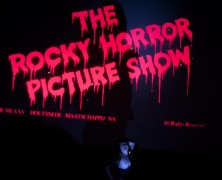

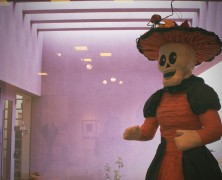
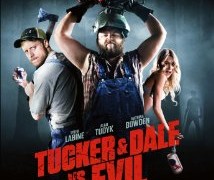
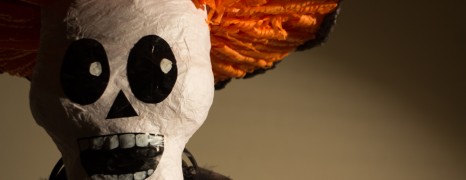


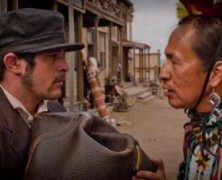


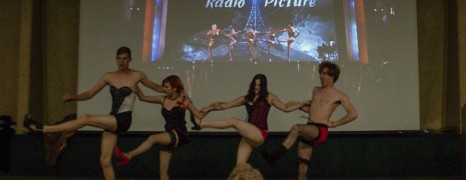


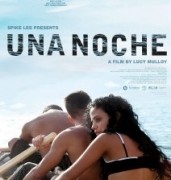

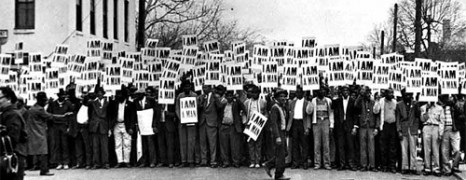
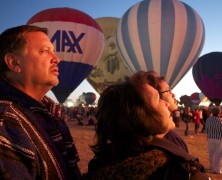
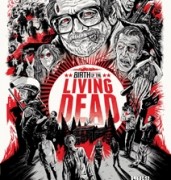


 Jackalope Magazine is the student magazine of Santa Fe University of Art and Design. Building on the interdisciplinary nature of our education, we aim to showcase the talent of our university and character of our city.
Jackalope Magazine is the student magazine of Santa Fe University of Art and Design. Building on the interdisciplinary nature of our education, we aim to showcase the talent of our university and character of our city.
Recent Comments